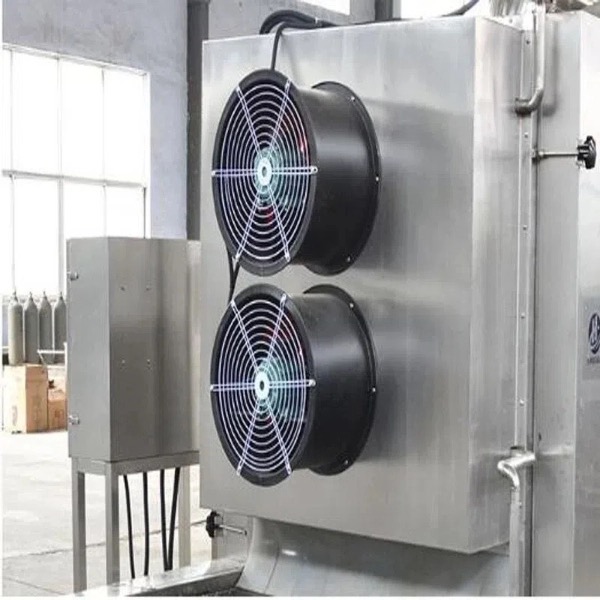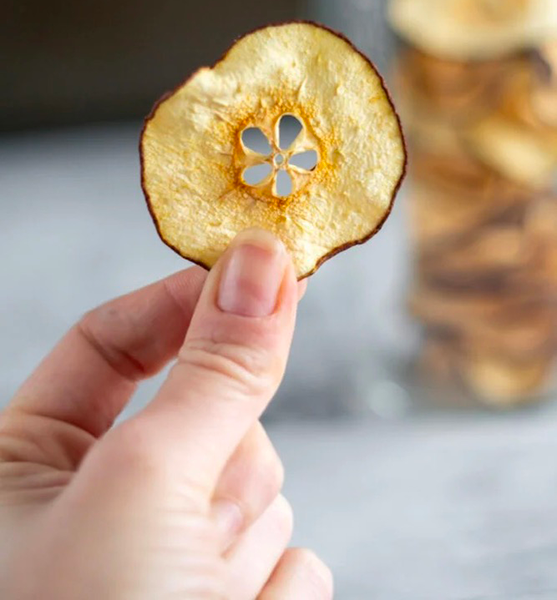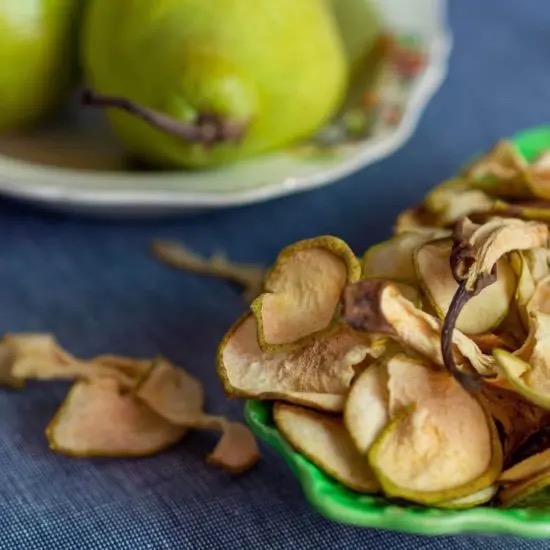In the food processing industry, drying products is crucial for extending shelf life, preserving quality, and maintaining nutritional value. Hang type dryers have become increasingly popular due to their efficiency and effectiveness in drying various food items, particularly seafood, meats, and herbs. This article delves into the different capacities of hang type dryers, their working mechanisms, advantages, applications in food processing, and best practices for operation.

What Are Hang Type Dryers?
Hang type dryers are specialized equipment designed to dry food products by suspending them from hangers within a controlled environment. This method is particularly effective for items that require even drying to prevent spoilage and maintain texture.
Key Features:
1. Suspended Arrangement: Food items are hung on stainless steel hangers, maximizing airflow around each product.
2. Controlled Environment: The dryer maintains optimal temperature and humidity levels to enhance the drying process.
3. Advanced Air Circulation: Ensures uniform moisture removal and prevents localized over-drying or under-drying.
How Do Hang Type Dryers Work?
Hang type dryers operate through a series of steps that ensure effective moisture removal:
1. Loading: Food products are hung on racks or hooks within the drying chamber.
2. Heating: The dryer uses electric resistance heaters or infrared heaters to provide controlled heat.
3. Airflow Management: An air circulation system ensures that air moves freely around the products, enhancing drying efficiency.
4. Moisture Removal: As moisture evaporates from the food items, it is expelled from the chamber.
5. Monitoring: Modern dryers often include programmable logic controllers (PLCs) for real-time monitoring of temperature and humidity.
Advantages of Hang Type Dryers
Hang type dryers offer several benefits that make them a preferred choice in food processing:
1. Even Drying: The suspended design allows for uniform airflow, preventing hot spots that can lead to uneven drying.
2. Nutrient Preservation: Controlled drying processes help retain essential nutrients that might be lost in traditional methods.
3. Reduced Spoilage: By effectively removing moisture, these dryers help prevent the growth of spoilage organisms like bacteria and fungi.
4. Energy Efficiency: Many modern hang type dryers incorporate heat pump technology, reducing energy consumption by up to 75% compared to conventional methods.

Different Capacities of Hang Type Dryers
Hang type dryers come in various capacities to accommodate different production needs. The capacity typically refers to the amount of product that can be dried at one time and can range from small-scale units suitable for artisanal producers to large industrial systems designed for high-volume operations.
Capacity Categories:
1. Small Capacity (up to 100 kg): Ideal for small businesses or specialty producers focusing on niche markets. These units are often compact and easy to operate, making them suitable for local farmers or small-scale processors looking to add value to their products through drying.
2. Medium Capacity (100 kg - 500 kg): Suitable for mid-sized operations that require flexibility in production volume. These dryers can handle a variety of products and are often equipped with advanced features such as programmable settings and improved temperature control systems.
3. Large Capacity (over 500 kg): Designed for large-scale manufacturers needing consistent output and efficiency. These industrial-grade dryers can accommodate high volumes of product while maintaining quality standards. They often feature automation systems that allow for continuous operation without manual intervention.
Applications in Food Processing
Hang type dryers are versatile and can be used for a wide range of food products:
1. Seafood: Effective for drying fish and shellfish while preserving flavor and texture. The controlled environment prevents oxidation and maintains the natural color of the seafood.
2. Meats: Used in curing processes for sausages and jerky, ensuring even moisture removal without compromising quality. This method enhances the flavor profile while extending shelf life significantly.
3. Herbs and Spices: Gentle drying preserves essential oils and aromatic compounds, enhancing flavor profiles. This process is critical for maintaining the potency of herbs used in culinary applications.
4. Fruits and Vegetables: High-quality dried fruits can be produced with minimal nutrient loss. Products like dried apples, apricots, and tomatoes have gained popularity as healthy snacks due to their concentrated flavors and extended shelf life.
Best Practices for Using Hang Type Dryers
To maximize the benefits of hang type dryers, manufacturers should consider the following best practices:
1. Regular Maintenance: Ensure that all components are functioning correctly to maintain efficiency. Regularly check heating elements, fans, and control systems to prevent breakdowns during operation.
2. Proper Loading Techniques: Avoid overcrowding to allow adequate airflow around each product. Proper spacing between items promotes even drying and prevents clumping or sticking together.
3. Temperature Control: Monitor temperatures closely to prevent overheating or under-drying. Use built-in sensors or external thermometers to ensure optimal conditions throughout the drying process.
4. Product Preparation: Pre-treating certain foods before drying can enhance quality. For example, blanching vegetables before drying can help preserve color and texture while reducing microbial load.
Innovations in Hang Type Dryer Technology
As technology evolves, so do hang type dryers. Recent innovations include:
1. Smart Technology Integration: Many modern hang type dryers come equipped with IoT capabilities that allow remote monitoring and control via smartphones or computers. This feature enables operators to adjust settings in real-time based on environmental changes or production needs.
2. Energy Recovery Systems: Advanced models now incorporate energy recovery technologies that capture waste heat generated during the drying process. This recovered energy can be reused within the system, significantly reducing overall energy costs.
3. Modular Designs: New designs offer modular setups where multiple units can be connected for larger operations without compromising space or efficiency. This flexibility allows businesses to scale up production as needed without significant capital investment upfront.
4. Enhanced Airflow Systems: Innovations in fan technology have led to more efficient air circulation patterns within the dryer chambers, further improving drying times and energy efficiency while ensuring uniform results across all products.
Conclusion
Hang type dryers represent a significant advancement in food processing technology, offering enhanced efficiency, better quality preservation, and energy savings. Their ability to accommodate various capacities makes them suitable for a wide range of applications across the food industry—from small artisanal producers to large manufacturing facilities. As manufacturers continue to seek ways to improve product quality while minimizing costs, hang type dryers will play an increasingly vital role in modern food processing operations.

FAQ
1. What types of foods can be dried using hang type dryers?
Hang type dryers are suitable for a wide range of foods including seafood, meats, herbs, spices, fruits, and vegetables due to their efficient drying capabilities.
2. How do hang type dryers preserve nutritional value?
By utilizing controlled temperatures and humidity levels during the drying process, hang type dryers help retain essential nutrients that might be lost in traditional methods.
3. What is the typical capacity range for hang type dryers?
Hang type dryers come in various capacities ranging from small units (up to 100 kg) for artisanal producers to large industrial systems (over 500 kg) designed for high-volume operations.
4. Are hang type dryers energy-efficient?
Yes, many modern hang type dryers incorporate energy-saving technologies such as heat pumps which can reduce energy consumption by up to 75% compared to conventional methods.
5. What maintenance is required for hang type dryers?
Regular maintenance includes checking heating elements, ensuring proper airflow, cleaning components, and monitoring control systems to ensure optimal performance.
Citations:
[1] https://www.dryeratech.com/hang-type-dryers-for-seafood-processing-benefits-and-best-practices.html
[2] https://www.foodinfotech.com/dryers-in-food-processing-enhancing-shelf-life-and-safety/
[3] https://patents.google.com/patent/CN110207480A/zh
[4] https://www.dryeratech.com/why-every-manufacturer-should-consider-a-hang-type-dryer.html
[5] https://www.researchgate.net/figure/Classification-of-dryers-for-food-processing_fig2_272211050
[6] https://patents.google.com/patent/WO2017197612A1/zh
[7] https://gcwgandhinagar.com/econtent/document/1588156026Unit%20V%20Types%20of%20dryers%20and%20their%20applications.pdf
[8] https://www.linkedin.com/pulse/dryers-food-industry-a-rex-lishandar
[9] https://patents.google.com/patent/WO2022068971A1/zh











